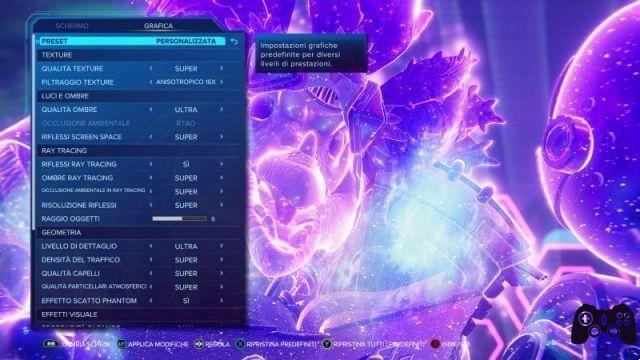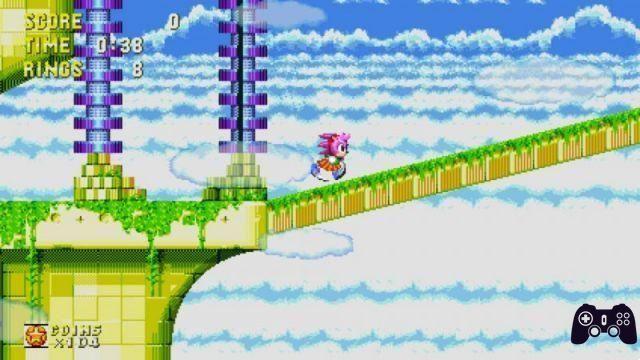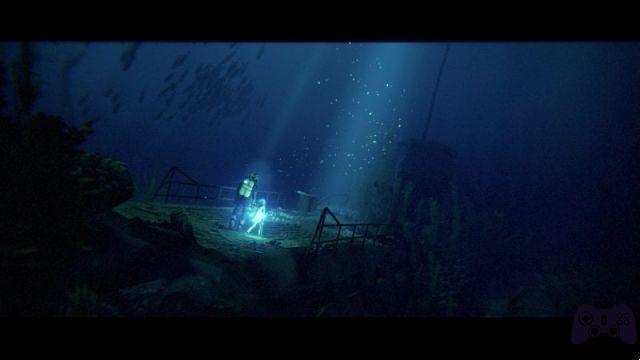Ratchet & Clank: Rift Apart arrived on PC without the fanfare that was expected for the debut on the Windows platform of one of the most important and, in its own way, significant PlayStation exclusives. In fact, for some reason, Sony did not publicize the event as much, as it did in the past with products like God of War, Horizon Zero Dawn or Marvel's Spider-Man.
However, this does not take anything away from the extraordinary quality of the brand title. Insomniac Games, once again the protagonist of a conversion carried out by Nixxes, probably the most solid so far for the Dutch team, full of adjustments and characterized by convincing performances, despite some problems that we are sure will be resolved with the first updates.
How was our experience with the game? We tell you everything in ours Review of Ratchet & Clank: Rift Apart for PC.
What is Ratchet & Clank: Rift Apart?

If you have read the review of Ratchet & Clank: Rift Apart for PS5 you already know what we are talking about: the latest adventure of the characters created by Insomniac Games is a concentration of emotions and spectacularity, an action game that puts combat first and does so thanks to very solid gameplay, providing us with a wide range of different weapons and encouraging us to try them all thanks to careful ammunition management.
It's true: the portal mechanics In concrete terms, it was a mere demonstration of the streaming capabilities of the Sony console, and in this case of PCs equally equipped with an NVMe SSD, but the game is still missing ideas, personality (a lot!), Accessible writing but non-trivial. , as well as a large amount of content that gravitates around the main structure, enriching it and increasing its variety.
Pledge to stop the evil Doctor Nefarious, who took possession of the Dimensionator created by Clank during a ceremony organized to celebrate the dynamic duo's heroic deeds, ending up absorbed along with his historical enemies into a dimension where he is the emperor of the universe. , we will find ourselves exploring different planets and checking unpublished characters, including the mysterious Rivet, in an attempt to set things right.
We will have the opportunity to freely explore each scenario based on its peculiarities, trying platform sections, dimensional switches or using tools (and creatures) capable of providing the speed necessary to cover long distances, and then closing the circle within. fast-paced arena-style combat, with hordes of different enemies to face and huge bosses that will require precise tactics.

At the same time we will be given the opportunity to collect Bolt and Raritarium, through which we can buy and improve our arsenal according to interesting and consolidated dynamics, which not in vain reflect what we saw in the previous adventures of Ratchet & Clank, this time . making ourselves available a truly amazing mix of instruments for its effectiveness and peculiarity.
All this as part of a campaign whose duration It is around twelve hours if you proceed based solely on the main plot, but it can also exceed twenty hours if you decide to make the most of the experience and discover everything it has to offer you between secondary missions, secrets and collectibles.
Technical realization

Ratchet & Clank: Rift Apart remains today one of the most graphically impressive titles on PS5, and it is clear that on PC the game has the opportunity to further emphasize its extraordinary visual impact, on the one hand thanks to the use of a potentially higher resolution at the same frame rate, on the other hand thanks to some more advanced presets and full, rather than partial, support for ray tracing.
From the geometries to the animations, from the effects to the design of characters and settings, through impeccable artistic direction, what flows before our eyes is an absolutely spectacular adventure, capable of moving even just because of what it shows, reiterating the concept that graphics really matter in a video game.
The PC version

As anticipated at the beginning, we find ourselves facing a excellent conversion, although the first analyzes published on the Internet may have underlined too harshly some of the inevitable shortcomings of Nixxes' work, which has several traits in common with Marvel's two Spider-Mans, but definitely has nothing to do with what seen at the release of The Last of Us, Part 1.
In fact, the performance criteria are respected and even exceeded: with an RTX 4070 it is possible to run the game at real 2160p, therefore without enhancement technologies, by selecting the Super preset, but without ray tracing to reach 60 fps, while using DLSS set to Quality you travel at 80 fps. Then, as is known, there is the Frame Generation of DLSS 3 for those who want to multiply their loaves and fishes, but be aware of the strong tearing that it can cause on screens without hardware synchronization.

Clearly it is the ray tracing to make all the difference in the world, even more so considering that on PC this technology is compatible not only with reflections, as happened on PS5, but also with shadows and ambient occlusion. In a similar way to what happened before the launch update of the aforementioned Marvel's Spider-Man, it is possible to adjust the quality of the effect at different levels, but when shooting everything at maximum you have to go down to 1440p and resort to DLSS in Quality. to truly achieve sixty impregnable frames.
Here, the consistency of the performances is an important and recurring theme when talking about the PC edition of Ratchet & Clank: Rift Apart, because among the current limitations of the conversion is, without a doubt, its tendency to make mistakes, with possible mistakes. really noticeable frame rate drops depending on what's happening on the screen. That's why we should aim for a substantial performance advantage, up to 30-40 fps, so that by activating vertical sync we can lull ourselves into the tranquility of 60 fps.

It is true that there is no shortage of options- In addition to resolution, vertical sync and NVIDIA Reflex, on the main panel there is a section that allows you to manage the different types of scaling and you have many options to choose between DLSS, FSR, XeSS and IGTI, each with their own presets qualitative. . There is also a dynamic scaler (which however does not work miracles, as usual) and you can choose the type of antialiasing, while there is no percentage scaler, but it is the proverbial nitpicker.
We then move on to the second panel, where Advanced settings: There is a general quality preset that goes up to Super, but this time some Ultra options have also been inexplicably hidden that you have to look for a bit, in this case shadow quality and level of detail. For the rest we have texture quality, texture filtering, screen space reflection, traffic density, hair quality, atmospheric particle quality and some other purely aesthetic effects.

Of course, experimenting with the settings in their current state is not very easy, as there are portability issues among them. a mysterious performance degradation phenomenon precisely when you start changing options without restarting the application. In fact, there seems to be a bug where lowering the resolution and then returning to standard produces a substantial increase in fps: we hope that with the first updates we can fix these defects.
After that there are some fault relating to screen space reflection, which the game uses to manage reflections in water instead of ray tracing, but it works poorly: during Sargasso's exploration phases, you often encounter puddles that, depending on the movement of your view, reflect or do not reflect the surrounding environment. and it's obviously not a pretty sight. These are trifles, unless you have an AMD GPU: in that case, unfortunately the situation is very different, since it is not present at launch.

So let's get to the question. SSD. As we have seen, the Insomniac Games title can, in theory, work even on a setup equipped with a mechanical disc, but the quality of the experience is greatly affected. With an NVMe SSD the loading times are very similar to those of the PlayStation 5, but we played using a SATA 3 SSD without encountering problems, perhaps just a few extra moments in the most frenetic sequences with the portals.
Finally, as with all PlayStation exclusives brought to PC, Ratchet & Clank: Rift Apart also supports the functions of Dual Sense Controller, although only in wired mode. This way we can perceive what is happening on the screen in a surprising way thanks to haptic feedback and use the variable resistance of the triggers in different situations, for example to activate alternative firing modes for certain weapons.
PC system requirements
Test setup
- Processor: Intel Core i5 13500
- Video card: NVIDIA RTX 4070
- Memory: 32GB RAM
- Storage: SATA 3 SSD
- Operating system: Windows 11
Minimum requirements
- Procesador: Intel Core i3 8100, AMD Ryzen 3 3100
- Scheda video: NVIDIA GTX 960, AMD RX 470
- Memory: 8GB RAM
- Storage: 75GB space required, SSD recommended
- Operating system: Windows 10
Recommended requirements
- Procesador: Intel Core i5 8400, AMD Ryzen 5 3600
- Video scheme: NVIDIA RTX 2060, AMD RX 5700
- Memory: 16GB RAM
- Storage: 75GB space required, SSD recommended
- Operating system: Windows 10
Conclusions
Tested version PC with Windows digital delivery Steam Price 59,99 € Holygamerz.com 9.0 Readers (34) 7.6 your voteRatchet & Clank: Rift Apart is confirmed as a spectacular and exciting adventure also on PC, thanks to a perhaps not perfect but very solid conversion, especially if we take into account how many problematic days have been seen this year on the Windows platform. There are many options, including Frame Generation for DLSS 3 compatible cards, and with a little patience it is easy to find a set of settings right now that will allow you to enjoy this splendid experience at suitable resolutions, complete with ray tracing and rock performance .
PRO
- An exciting adventure
- Visually it is truly spectacular.
- Excellent conversion
AGAINST
- Some simplifications in terms of gameplay.
- Some technical problems to solve
- Ray tracing is not supported on AMD cards






